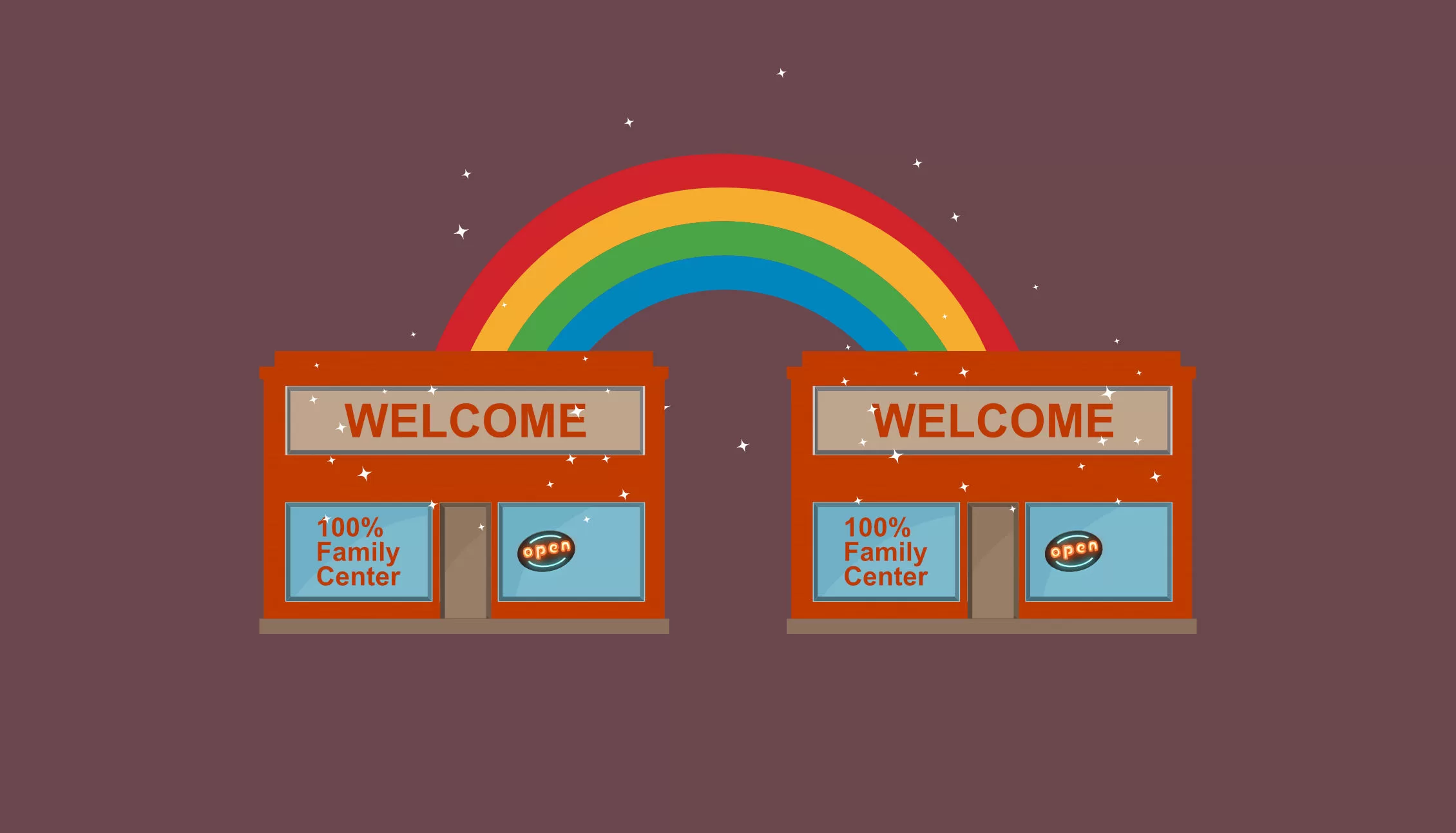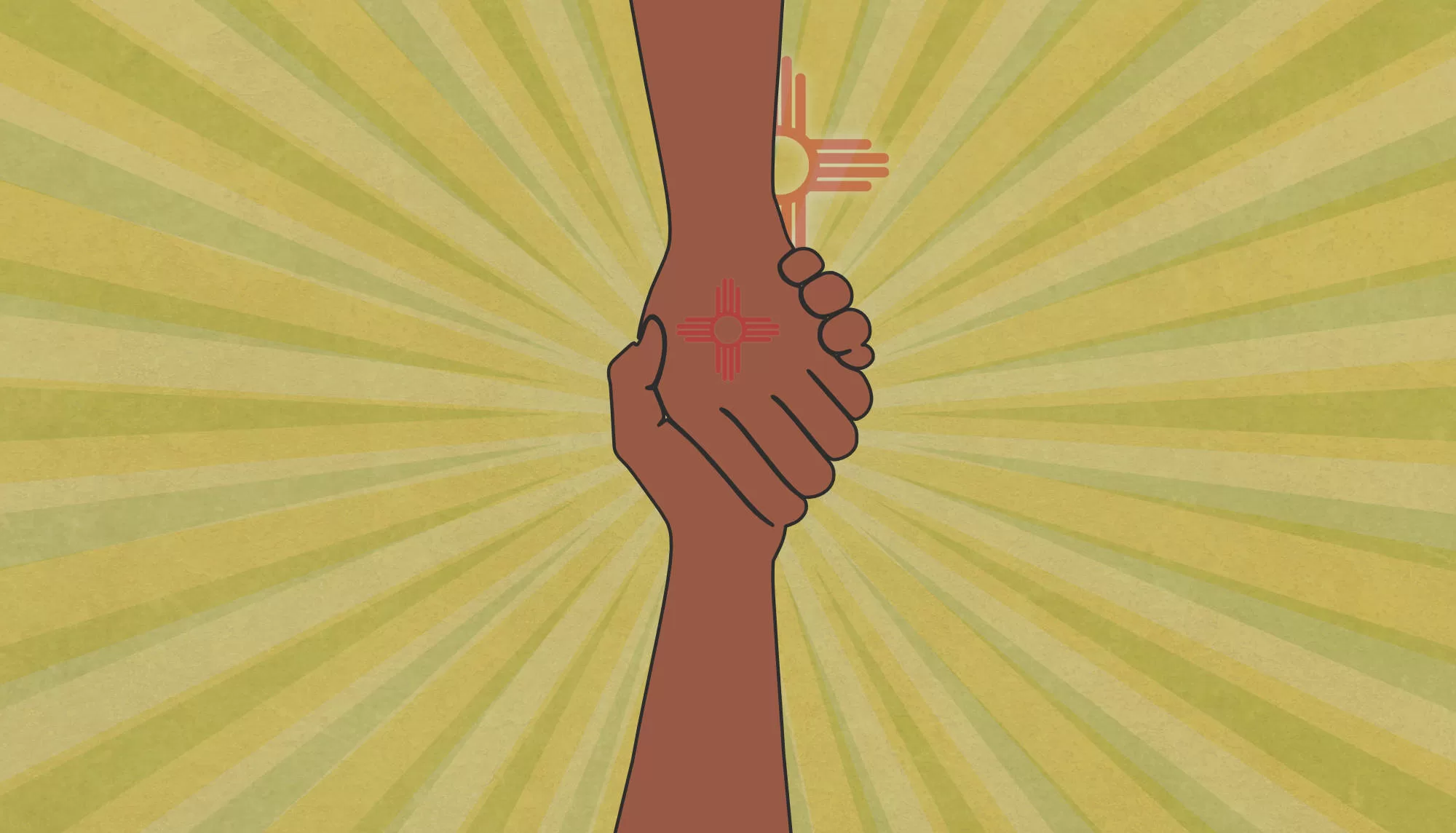Who Knows What Will Happen to Us Next Year?
What’s newsworthy is that half the state’s counties are working with the 100% New Mexico initiative to do what’s been called “impossible” by ensuring every child has access to ten vital services for surviving and thriving.
Katherine Ortega Courtney, PhD and Dominic Cappello
At the end of 2022, man-made environmental and economic meltdowns along with mutating viruses continue to loom over New Mexico and 49 other vulnerable and disrupted states. The headlines screaming of impending disasters don’t herald articles explaining root causes or offering solutions. The distracting and doom-themed clutter endlessly cycling through our phones is enough to make anyone hide under the covers—unless you are in New Mexico.
Instead of being disempowered, we’re a movement of neighbors helping neighbors. Across New Mexico, county by county, we are proactively identifying the biggest health, safety, education, and workforce challenges. We are making plans to address them head-on with the nation’s first data-driven collective impact process focused on transforming the adverse social determinants of health into positive ones. In non-public health language, this means we are working to ensure that every community within all 33 counties has access to the ten vital services for surviving and thriving.
The goal is audacious. We want every New Mexican child, parent, and caregiving grandparent empowered to thrive with local services. Hundreds of participants are actively working within NMSU’s 100% New Mexico initiative to make New Mexico the safest place to be a child and teen.
As readers of our past articles know, our initiative is growing at a rate far beyond our wildest expectations. When we joined NMSU two years ago, we thought having three counties engaged in the 100% New Mexico initiative would give us reason to celebrate. We now have 15 counties with more asking to join in this groundbreaking strategy. This means that if you live in a county with our initiative, you have local stakeholders publicly asking city, county, and state leaders the following questions:
- WHAT IS THE STATE OF HEALTHCARE? Does every family have access to timely and quality medical, dental, and behavioral care to address injury and illness, as well as address paralyzing uncertainty, untreated trauma, substance use disorders, and other behavioral health challenges? Is there a local plan to remove barriers to ensure access to healthcare by working with public and private providers, along with regional mega healthcare provider taskforces? What is the plan for addressing historic provider shortages and burnout?
- WHAT IS THE STATE OF EDUCATION? How well-resourced are each of our public schools? Which of our 800+ public schools would like the funding to become sustainable community schools (a proven model that strengthens students’ academic success along with the health and safety of students and the entire school community by making school sites one-stop service hubs for families)? How will we address teacher shortages locally in order to grow the capacity to provide an education that celebrates cultural diversity and aligns with the future workforce needs?
- WHAT IS THE STATE OF HOUSING? What are local stakeholders and elected leaders doing to create more affordable housing? Are they looking at innovative models for building fast, green, and low-cost housing that have been proven to work across the nation and globe including models designed to provide housing for those with chronic health challenges? How will we finally end the era of homeless students, as well as families living without electricity and plumbing?
- WHAT IS THE STATE OF FOOD? How do county and city stakeholders bring together local leaders in agriculture, food production, and food security, along with local restaurant networks, to finally end child hunger and food insecurity among families? It’s been done elsewhere so why not here?
- WHAT IS THE STATE OF TRANSPORTATION? Will county and city leaders innovate to solve rural and urban transportation challenges by looking to see which solutions already work in other societies? Will they design public transport systems that take advantage of app-enabled ride-sharing models and technologies that only come from thinking outside the box since it’s clear that the old set-route bus system model is only efficient for areas with dense populations?
Questions leading to answers
These are the questions being asked across the state, inspired by the 100% New Mexico initiative. The initiative provides the data needed to identify where problems exist and then showcases available solutions that are already working elsewhere, and in some cases, working in other New Mexico communities. Also within the initiative, action teams within each county are leading conversations focused on parent supports (including the 100% Family Center: One Stop Service Hub model), early childhood learning programs, youth mentorship, and job training.
Your caring action fuels 100%
As for what will happen to New Mexico next year, we are not waiting for predictions, not listening to doom-filled social media, and not empowering dinosaur-brained, apathetic, distracted, and deluded nay-sayers. We are pushing forward with a plan, the 100% New Mexico initiative, that brings together thousands of New Mexicans from everyday residents, to school board members, city councilors, county commissioners, and more. The momentum is increasing, the people are empowered, and the plan is ready.
As we like to say at our 100% Summits, we are “neighbors helping neighbors helping neighbors.” Here’s to 2023, The Year of Unstoppable Solutions fueled by our compassion, creativity, and can-do collaboration.
Mission: The 100% New Mexico initiative is dedicated to ensuring that 100% of families can access ten vital services crucial for their overall health, resilience, and success. This university-sponsored endeavor necessitates the local implementation of evidence-based strategies encompassing both community and school-based service hubs, aiming to prevent the most pressing and costly public health and safety challenges, including adverse social determinants of health and adverse childhood experiences.
Don’t miss a blog post! Get notified!
The 100% New Mexico initiative is a program of the Anna, Age Eight Institute at New Mexico State University, College of Agricultural, Consumer and Environmental Sciences, Cooperative Extension Service. Contact: annaageeight@nmsu.edu or visit annaageeight.nmsu.edu to learn more.





